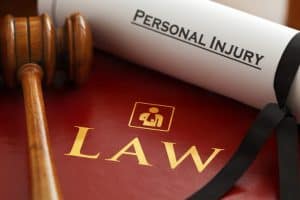Getting into a physical injury case can manifest visible signs of physical harm. They’re documented in tangible evidence and medical records. These files can be viewed by authorized people handling the case.

However, emotional distress is another story. It can significantly turn your life around, and it can be harder to prove. People involved in the case could easily challenge your statements and undermine the extent of your emotional suffering, which makes proving emotional distress a challenging and taxing journey for you.
Defining Emotional Distress in Personal Injury Law
Emotional distress is the mental anguish or psychological suffering that you endure after a traumatic injury or event. Unlike physical pain and injuries, it happens inside a person’s state of mind. It can manifest into post-traumatic stress disorder (PTSD), insomnia, fear, depression, and anxiety.
Emotional distress is classified as non-economic damage. It can affect your quality of life more than financial loss. You can get compensated for severe emotional distress if the injury or event that resulted from the defendant’s actions caused emotional and mental suffering.
Physical pain can also appear due to emotional distress, including:
- Upset stomach
- Headaches
- Nausea
- Muscle pain, especially in the neck
These physical symptoms could be accompanied by eating disorders and compulsive behaviors like gambling and shopping.
Prove Emotional Distress to Win Your Case
This is how you can back up your emotional distress claim to show your severe emotional suffering:
Document Your Symptoms
A clear documentation of your symptoms shows the infliction of emotional distress on you. This will be the foundation to prove that you’re suffering.
Maintain all records of all the psychological and emotional symptoms that you suffered after the injury. Write every episode of your anxiety, nightmares, panic attacks, and difficulty concentrating and how it affected your personal life in a journal. Describe your feelings in all of these episodes through texts, chats, and emails to the therapists and the people around you. First-hand evidence shows how serious your emotional trauma is.
Get Medical Records and Diagnosis
These professional records provide accuracy to your emotional distress case. Get a formal diagnosis of depression, PTSD, and anxiety from a therapist to solidify your claim. Gather all records of your treatment, such as the diagnoses, professional notes, and prescribed medication. These show that you suffered emotional distress and have been treated by an expert.
Prepare proof of ongoing therapy in case the court questions your medical documents. Include the costs of the sessions, travel expenses, and treatment plans. Submit all the bills and receipts to show the financial burden of the emotional suffering.
Ask for Testimony from Mental Health Professionals
Expert testimony can make your emotional distress claims credible. Ask your therapist for a written testimony of your condition or be a witness at your trial. They can explain your emotional distress in full detail, including its causes and the treatment you’re currently taking. They can also testify about the impact of emotional distress on your personal and professional life.
Connect Physical Injury and Emotional Distress
It’s always crucial to establish the connection between emotional distress and physical injury. Tell the court that your ongoing physical pain can lead to depression during the recovery process. Add your statement with traumatic events triggering your PTSD. Your medical documents can establish this connection, so better prepare them ahead of time.
Use Photos and Videos
Your photos and videos give a powerful and emotional visual presentation to prove your distress to the judge and jury. If you can, give photos and videos taken after the event. These visuals show how severe the incident was for you and add weight to your arguments. Show your emotional state during or after the event.
Provide Evidence of Lifestyle Changes
You go through lots of changes after getting into an accident, and your lifestyle isn’t spared from that. Providing evidence of these changes can strengthen your emotional distress lawsuit. You can:
- Get receipts, documentation, and photos showing your appearances in activities you once loved but don’t do now following the injury.
- Obtain testimonials from family and friends regarding your behavior changes and current circumstances as evidence.
Consult a Personal Injury Lawyer
Injury lawyers can assist you in many ways after you get involved in an injury. They can:
- Study Your Case: They will look into the circumstances surrounding the injury and determine if you have a viable claim and the kind of compensation you can be entitled to.
- Negotiate with Insurance Companies: They can fight tooth and nail with insurance companies to get you a fair settlement and keep you from getting pressured to accept a low offer. They will also help you maximize the compensation you’ll get for all the medical expenses, pain and suffering, and lost wages.
- Compile Evidence: Your lawyer can gather all the records, reports, testimonies, and statements you need for the case. They’ll also handle legal filings and court submissions to make sure your case is on track.
- Give Legal Advice: Lawyers will guide you throughout the whole process, including explaining your rights and the possible outcomes of your case.
- Court Representation: If a settlement is impossible, your lawyer will represent you in court and present your case before a jury or a judge to get your deserved compensation.
Final Words
Emotional distress in a personal injury lawsuit may be hard to quantify, but your supporting evidence can make a difference and help you win the case. These documents can establish and validate your distress and the physical manifestations that were borne out of it. Ask the help of an experienced personal injury attorney to give you a hand in proving your emotional turmoil after a traumatic event during court hearings.

